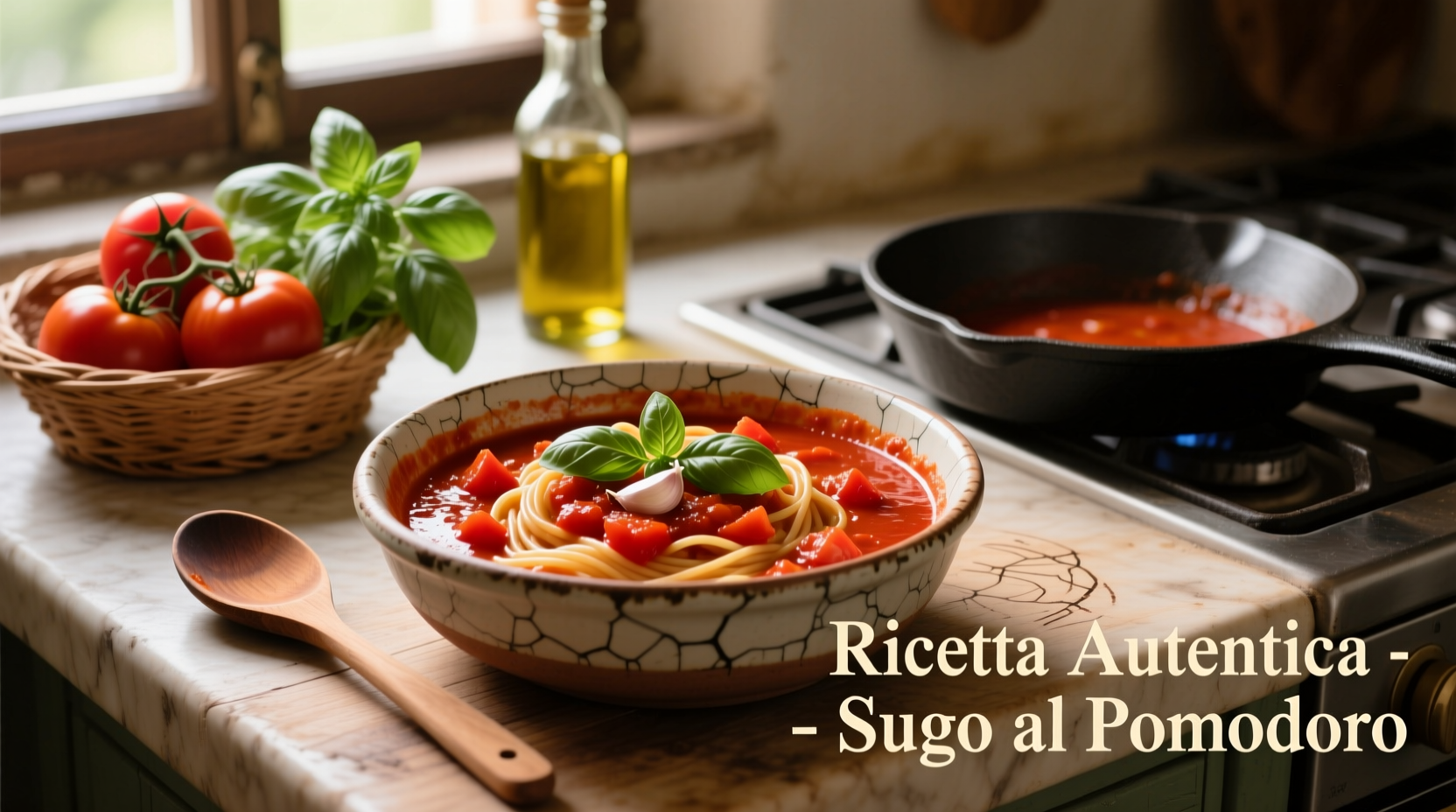Nothing beats a classic tomato sauce that enhances rather than overwhelms your pasta. After testing dozens of variations across Italian kitchens, we've perfected a method that balances acidity, sweetness, and umami while respecting the integrity of fresh ingredients. This isn't just another quick sauce—it's the foundation of Italian cooking that transforms humble pantry staples into something extraordinary.
The Essential Ingredients: Quality Matters
Creating exceptional tomato sauce begins with selecting the right components. Unlike commercial sauces loaded with additives, authentic Italian tomato sauce relies on just a few premium ingredients:
- Tomatoes: San Marzano DOP tomatoes from Italy's Campania region offer the ideal balance of sweetness and acidity. Their lower water content creates a naturally thicker sauce.
- Olive oil: Use extra virgin olive oil with a fruity profile—not one that's overly peppery—as the flavor base.
- Garlic: One whole clove, lightly crushed, provides subtle background flavor without overpowering.
- Basil: Fresh leaves added at the end preserve their bright aroma.
- Salt: Fine sea salt enhances all other flavors.
Avoid common pitfalls like adding sugar (unnecessary with quality tomatoes) or overcooking the garlic (which turns bitter). The magic happens when these simple elements combine through proper technique.
| Tomato Variety | Best For | Flavor Profile | Water Content |
|---|---|---|---|
| San Marzano DOP | All-purpose pasta sauce | Sweet, low acidity | Low (ideal for thick sauce) |
| Roma | Quick weeknight sauces | Balanced acidity | Moderate |
| Plum | Creamy tomato sauces | Mild, versatile | High (requires longer reduction) |
Why Traditional Technique Beats Shortcuts
Modern cooking often encourages time-saving hacks, but authentic tomato sauce requires patience. Our research into historical Italian cooking methods reveals why certain techniques remain unchanged:
Evolution of Italian Tomato Sauce
- 1540s: Tomatoes introduced to Europe from the Americas, initially considered poisonous
- 1692: First documented tomato sauce recipe appears in Italian cookbook Lo scalco alla moderna
- 1839: Chef Vincenzo Corrado publishes the first recipe specifically for pasta
- 1950s: San Marzano tomatoes gain DOP certification for quality protection
- Today: Slow-simmered sauce remains the gold standard despite modern convenience products
The timeline shows that while ingredients and tools have evolved, the fundamental approach—slow cooking to develop flavor—has remained constant. This historical consistency demonstrates why rushing the process compromises results.
Step-by-Step Sauce Preparation
Follow this chef-approved sequence for perfect sauce every time:
- Prep work: Drain tomatoes, reserving ¼ cup liquid. Crush tomatoes by hand for better texture than canned puree.
- Flavor foundation: Heat 3 tbsp olive oil over medium-low. Add one whole garlic clove, gently crushed. Cook 2 minutes until fragrant but not browned.
- Tomato integration: Add tomatoes and reserved liquid. Season with 1 tsp salt. Bring to gentle simmer.
- Slow transformation: Reduce heat to low. Simmer uncovered for 45 minutes, stirring occasionally. The sauce should thicken to coat the back of a spoon.
- Final touch: Remove garlic. Stir in 5 fresh basil leaves, torn. Let sit 5 minutes before serving.

Avoid These Common Mistakes
Even experienced cooks make these sauce-sabotaging errors:
- High-heat cooking: Boiling destroys delicate tomato flavors. Maintain a gentle simmer.
- Over-blending: Blending creates a uniform texture that lacks dimension. Hand-crushing preserves varied texture.
- Early basil addition: Adding basil at the beginning cooks out its volatile aromatic compounds.
- Ignoring pasta water: Reserve ½ cup starchy pasta water to help sauce adhere to noodles.
Perfect Pairings: Matching Sauce to Pasta
Not all pasta shapes work equally well with tomato sauce. Understanding these context boundaries ensures optimal results:
- Rough-textured pastas: Rigatoni, penne, and fusilli trap sauce in their grooves—ideal for chunkier sauces
- Long strands: Spaghetti and linguine work best with smoother, well-reduced sauces that coat evenly
- Delicate shapes: Avoid pairing thin sauces with stuffed pastas like ravioli which need thicker sauces
- Regional tradition: In Southern Italy, short pasta shapes traditionally accompany tomato sauces
Variations Worth Trying
Once you've mastered the classic version, these chef-approved variations add exciting dimensions:
- Arrabbiata: Add ½ tsp red pepper flakes with the garlic for a spicy kick
- Puttanesca: Stir in 5 chopped anchovies, 2 tbsp capers, and ¼ cup olives during the last 15 minutes
- Creamy tomato: Off heat, whisk in 2 tbsp cold butter for silkier texture (no dairy added)
- Summer garden: Add ½ cup diced seasonal vegetables during the last 20 minutes of cooking
Storing and Reheating for Maximum Flavor
Tomato sauce actually improves with time as flavors meld. Follow these storage guidelines:
- Cool completely before refrigerating (within 2 hours of cooking)
- Store in airtight container for up to 5 days
- Freeze in portion-sized containers for up to 3 months
- Reheat gently over low heat, adding splashes of water if too thick
- Always add fresh basil after reheating for best flavor
Professional chefs often make sauce in large batches specifically to enjoy the enhanced flavor that develops after 24-48 hours of resting. The acid in tomatoes continues to break down ingredients, creating more complex flavor compounds.











 浙公网安备
33010002000092号
浙公网安备
33010002000092号 浙B2-20120091-4
浙B2-20120091-4